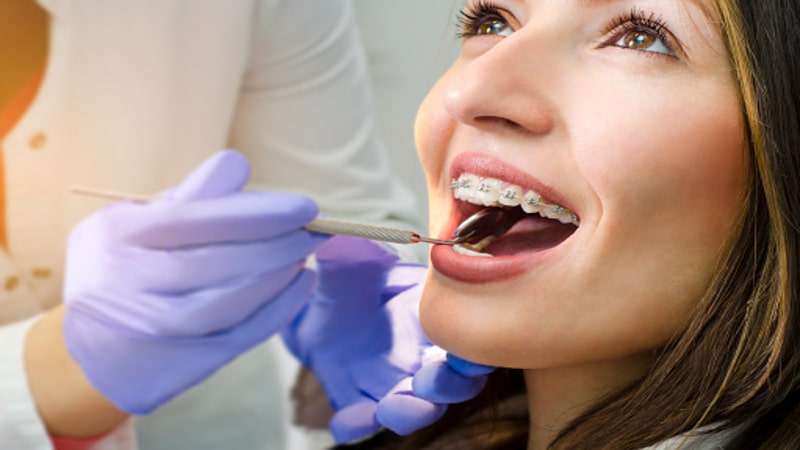There are many types of braces on the market, but these five categories are more popular. Read on to learn more about the five different types of braces available in the market and which one might be right for you!
Types of braces:
There are five types of braces mostly used in the market:
- Traditional braces
- Clear aligners
- Ceramic braces
- Lingual braces
- Fixed retainers
Important Points:
It’s important to talk to your orthodontist about what treatment will work best for you based on how you feel about your current smile and how much time you want to put into therapy.
Orthodontists most commonly recommend traditional braces or clear aligners. Clear aligners are suitable for mild cases; traditional braces work best for severe cases.
Lingual (hidden) braces are ideal in certain situations. Fixed retainers are a backup to your other treatments but can be replaced at any time with a removable retainer if you want an even straighter smile.
1) Traditional braces:

Traditional braces are also known as metal braces. These braces have been used for over 100 years. In the start, these braces were very prominent and large in size.
With time there were many changes in traditional braces, now these braces are tiny, fast, and comfortable.
2) Clear (Invisible) Aligners:

Clear aligners are more popular than traditional braces. These braces are easy to apply and remove, that’s why you can easily brush and clean your teeth daily.
Generally, orthodontists recommend these braces to patients who have minor issues with teeth alignment or gaps among teeth.
3) Ceramic braces:

Ceramic braces are similar to the traditional braces, but these braces are less visible. These are milky-colored, that’s why they are less visible.
Most people like to use ceramic braces because they are less expensive and less noticeable than traditional braces.
4) Lingual braces:

Lingual braces are also a very popular type of braces. These braces are totally invisible because they are applied behind your teeth.
Lingual braces are specially designed to fit behind your existing teeth and attach in small brackets to your back molars.
They are also removable but these can take a long time than other types of braces to treat due to their adjustment schedule.
If you used ceramic, traditional, or clear braces, then linguals might not be ideal for you because they can be hard to clean.
5) Fixed retainers:

Fixed retainers are created to correct a specific kind of misalignment, in which teeth are not straight.
Fixed retainer braces can last for a few weeks to a year, according to the condition of your teeth misalignment.
Fixed retainers should remain firmly in place until their intended purpose has been achieved.
Also, read How Long Does A Root Canal Take?











3 comments